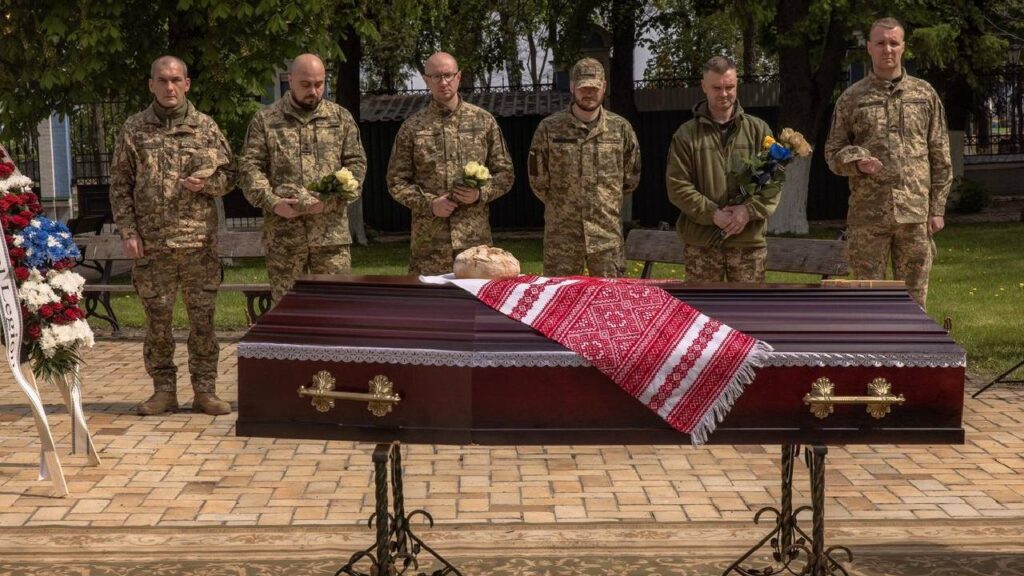World
Evacuations Ordered in Ukraine as Conflict Looms
A WSJ Renewal Subscription news.- Russian-installed officials have ordered the evacuation of civilians from 18 occupied communities near the front line as both sides appear to be preparing for a widely expected Ukrainian offensive. Yevgeniy Balitsky, the Russian-installed head of occupied parts of Ukraine’s southern Zaporizhzhia region, said the evacuation was necessary to “strengthen security” amid an increase in Ukrainian attacks. The city of Enerhodar, located next to the Russian-occupied Zaporizhzhia nuclear plant, is among the communities being evacuated. Mr. Balitsky stated that he decided to remove children with their parents, the elderly, the disabled, and patients of medical institutions from enemy fire and move them from the front-line territories deep into the region to ensure the safety of the residents.
Children will be able to continue their studies once they are evacuated, and people who are being evacuated will receive accommodation, food, and “lump sum payments.” These evacuations are the latest step Russian officials have taken to consolidate their hold on occupied parts of Ukraine ahead of a possible Ukrainian offensive to retake lost territory. Officials have also been encouraging residents to take Russian passports, and officers question people on public buses who are far from home.
Get Wall Street Journal 2-Year Print Subscription for $480
Last year, Russian officials evacuated civilians from the city of Kherson before the withdrawal of Moscow’s forces from the city. The Institute for the Study of War, a Washington-based think tank, said the evacuation of civilians from front line areas is likely designed to pave the way for Russian troops to conduct a controlled retreat. The institute wrote, “The locations of these settlements being evacuated so far from the current front lines suggest that Russian forces plan to conduct a controlled, fighting withdrawal from their current positions to a prepared line of defense rather than trying to hold the current line of contact in the event of a possible Ukrainian counteroffensive.”
Meanwhile, Ukraine has also been limiting the movement of civilians near the front, imposing a weekend curfew in Kherson. Ukrainian officials cited Russian attacks on the city as the reason. Russian shelling of the region killed at least 23 people this week, according to Ukrainian officials. Ukrainian officials said they had shot down a Russian Kinzhal missile this week using a Western-made Patriot air defense system. This marks the first time Ukraine has intercepted a ballistic Kinzhal missile, which travels much faster than the Russian cruise missiles Ukraine has routinely shot down in recent months. WSJ Renewal Subscription reported.
Russia has suffered a spate of drone attacks on its territory mainly targeting logistical infrastructure such as railways and fuel depots. Kyiv hasn’t claimed responsibility for the attacks but many experts see them as part of the preparations for a coming Ukrainian offensive.
Get WSJ Print Edition Subscription 1 Year for $318
On Saturday, authorities in Russian-occupied Crimea said air defense systems had repelled an attack in the north of the peninsula. No damage was reported. Traffic on Crimea’s Kerch Strait bridge linking the occupied peninsula directly to Russia was briefly suspended for what transport officials said were technical reasons.
Also on Saturday, authorities in Russia’s Belgorod region near the border with Ukraine reported shelling in the city of Shebekino, where the region’s governor, Vyacheslav Gladkov, said there was one victim. Mr. Gladkov wrote on Telegram that an SMS alert had been sent “about the need to take refuge in a safe place.” The regional branch of the Russian Emergency Situations Ministry said information circulating on social media about the evacuation of residents from Belgorod was false.
In a video clip posted on Telegram Saturday, Yevgeny Prigozhin, leader of Russian paramilitary group Wagner, said Russian forces had around 2.5 kilometers, less than 2 miles, to navigate to take Bakhmut. He claimed that Ukrainian forces were bringing 400 to 600 soldiers to Bakhmut daily and losing approximately that same

